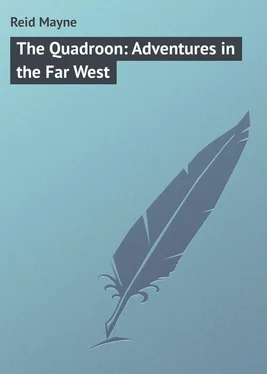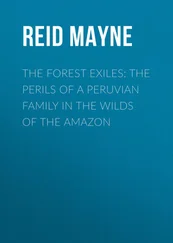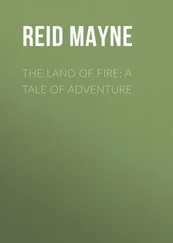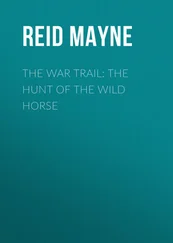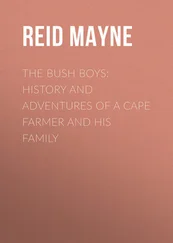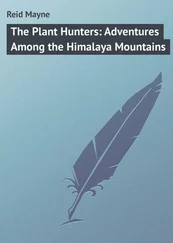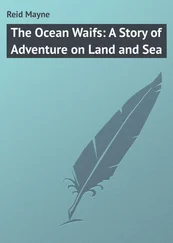Mayne Reid - The Quadroon - Adventures in the Far West
Здесь есть возможность читать онлайн «Mayne Reid - The Quadroon - Adventures in the Far West» — ознакомительный отрывок электронной книги совершенно бесплатно, а после прочтения отрывка купить полную версию. В некоторых случаях можно слушать аудио, скачать через торрент в формате fb2 и присутствует краткое содержание. Жанр: foreign_prose, foreign_adventure, на английском языке. Описание произведения, (предисловие) а так же отзывы посетителей доступны на портале библиотеки ЛибКат.
- Название:The Quadroon: Adventures in the Far West
- Автор:
- Жанр:
- Год:неизвестен
- ISBN:нет данных
- Рейтинг книги:3 / 5. Голосов: 1
-
Избранное:Добавить в избранное
- Отзывы:
-
Ваша оценка:
- 60
- 1
- 2
- 3
- 4
- 5
The Quadroon: Adventures in the Far West: краткое содержание, описание и аннотация
Предлагаем к чтению аннотацию, описание, краткое содержание или предисловие (зависит от того, что написал сам автор книги «The Quadroon: Adventures in the Far West»). Если вы не нашли необходимую информацию о книге — напишите в комментариях, мы постараемся отыскать её.
The Quadroon: Adventures in the Far West — читать онлайн ознакомительный отрывок
Ниже представлен текст книги, разбитый по страницам. Система сохранения места последней прочитанной страницы, позволяет с удобством читать онлайн бесплатно книгу «The Quadroon: Adventures in the Far West», без необходимости каждый раз заново искать на чём Вы остановились. Поставьте закладку, и сможете в любой момент перейти на страницу, на которой закончили чтение.
Интервал:
Закладка:
Chapter Eight
The “Coast” of the Mississippi
As soon as we had fairly started, I ascended to the “hurricane-deck,” in order to obtain a better view of the scenery through which we were passing. In this place I was alone; for the silent pilot, boxed up in his little tower of glass, could hardly be called a companion.
I make the following observations:
The breadth of the Mississippi river has been much exaggerated. It is here about half a mile wide. Sometimes more, occasionally less. (This average width it preserves for more than a thousand miles from its mouth.) Its waters run at the rate of three or four miles to the hour, and are of a yellowish cast, with a slight tincture of “red.” The yellow colour it derives from the Missouri, while the deeper tint is obtained by the influx of the “Red.”
Driftwood floats thickly upon its surface; here in single logs, there in raft-like clusters. To run a boat against one of these is attended with danger, and the pilot avoids them. Sometimes one swimming below the surface escapes his eye; and then a heavy bumping against the bows shakes the boat, and startles the equanimity of the less experienced passengers. The “snag” is most dreaded. That is a dead tree with heavy roots still adhering. These, from their weight, have settled upon the bottom, and the débris gathering around holds them firmly imbedded. The lighter top, riven of its branches, rises towards the surface; but the pressure of the current prevents it from attaining to the perpendicular, and it is held in a slanting position. When its top rises above the water, the danger is but trifling – unless in a very dark night – it is when the top is hidden a foot or two below the surface that the snag is feared. Then a boat running upon it up-stream, is lost to a certainty. The roots firmly imbedded in the bottom mud, prevent the pile from yielding; and the top, usually a spiky one, penetrates the bow timbers of the boat, sinking her almost instantly. A boat properly “snagged” will go down in a few minutes.
The “sawyer” is a log fixed in the water similarly to the snag, but kept bobbing up and down by the current, thus suggesting the idea of a sawyer engaged at his work – hence the name. A boat getting aground upon a sunken log crosswise , is sometimes snagged upon its branches, and sometimes broken into two pieces by the pressure of her own weight.
Among the drift, I notice odd matters that interest me. Stalks of sugar-cane that have been crushed in the press-mill (a hundred miles farther up I should not meet these), leaves and stems of the maize plant, corn-cobs, pieces of broken gourd-shell, tufts of raw cotton, split fence-rails, now and then the carcase of some animal, with a buzzard or black vulture ( Cathartes aura and atratus ) perched upon it, or hovering above.
I am within the geographical range of the alligator but here the great Saurian is seldom seen. He prefers the more sluggish bayous , or the streams whose shores are still wild. In the rapid current of the Mississippi, and along its well-cultivated banks, he is but rarely observed by the passing traveller.
Alternately the boat approaches both shores of the river (“coasts” they are called). The land is an alluvion of no very ancient formation. It is a mere strip of terra firma , varying in breadth from a few hundred yards to several miles, and gradually declining from the banks, so that the river is actually running along the top of a ridge! Beyond this strip commences the “Swamp,” a tract that is annually inundated, and consists of a series of lagoons and marshes covered with coarse grass and reeds. This extends in some places for a score of miles, or even farther – a complete wilderness of morass. Some portions of this – where the inundation is only annual – are covered with dark and almost impenetrable forests. Between the cultivated strip on the immediate bank of the river, and the “Swamp” in the rear, runs a belt of this forest, which forms a kind of background to the picture, answering to the mountain-ranges in other lands. It is a high, dark forest, principally composed of cypress-trees ( Cupressus disticka ). But there are other kinds peculiar to this soil, such as the sweet-gum ( Liquidambar styraciflua ), the live-oak ( Quercus vivens ), the tupelo ( Nyssa aquatica ), the water-locust ( Gleditschia aquatica ), the cotton-wood ( Populus angulata ), with carya, celtis , and various species of acer, cornus, juglans, magnolia , and oaks. Here an underwood of palmettoes ( Sabal palms), smilax, llianes , and various species of vitis ; there thick brakes of cane ( Arundo gigantea ), grow among the trees; while from their branches is suspended in long festoons that singular parasite, the “Spanish moss” ( Tillandsia usneoides ), imparting a sombre character to the forest.
Between this dank forest and the river-banks lie the cultivated fields. The river current is often several feet above their level; but they are protected by the “Levee,” an artificial embankment which has been formed on both sides of the river, to a distance of several hundred miles from its mouth.
In these fields I observe the culture of the sugar-cane, of the rice-plant, of tobacco and cotton, of indigo and maize. I see the “gangs” of black slaves at their work, in their cotton dresses of striped and gaudy colours, in which sky-blue predominates. I see huge waggons drawn by mules or oxen returning from the cane-fields, or slowly toiling along the banks. I see the light-bodied Creole, in “cottonade” jacket and trousers of bright blue, mounted upon his small Spanish horse, and galloping along the Levee road. I see the grand mansion of the planter, with its orange-groves and gardens, its green Venetians, cool verandahs, and pretty palings. I see the huge sugar-house, or tobacco-shed, or cotton “pickery;” and there, too, are the neat “cabins,” clustering together or running in a row, like the bathing-boxes at a fashionable watering-place.
Now we are passing a plantation where they are making merry – a fête champètre . Many horses stand under the trees, “hitched” in the shade with saddles on, not a few of which are “ladies’ saddles.” In the verandah, the lawn, and through the orange shrubbery, may be seen moving about gentlemen and ladies richly attired. Music is heard, and there is dancing in the open air. One cannot help envying these happy Creoles the enjoyment of their Arcadian life.
Scenes varied and lovely were passing panorama-like before my eyes. Lost in admiration of them, I had for the moment forgotten Eugénie Besançon .
Chapter Nine
Eugénie Besançon
No, Eugénie Besançon was not forgotten. Every now and then her sylph-like form flitted before my imagination, and I could not help associating it with the scenery through which we were passing, and amidst which, no doubt, she was born and nurtured – its fair indigène . The glimpse of the fête champètre , where several Creole-like girls were conspicuous, brought her more forcibly into my thoughts; and, descending from the hurricane-deck, I entered the cabin with some curiosity, once more to look upon this interesting lady.
For some time I dreaded disappointment. The great glass folding-door of the ladies’ cabin was closed; and although there were several ladies outside in the main saloon, the Creole was not among the number. The ladies’ cabin, which occupies the after-part of the boat, is a sacred precinct, into which bachelors are admitted only when they enjoy the privilege of having a friend inside – then only at certain hours.
Читать дальшеИнтервал:
Закладка:
Похожие книги на «The Quadroon: Adventures in the Far West»
Представляем Вашему вниманию похожие книги на «The Quadroon: Adventures in the Far West» списком для выбора. Мы отобрали схожую по названию и смыслу литературу в надежде предоставить читателям больше вариантов отыскать новые, интересные, ещё непрочитанные произведения.
Обсуждение, отзывы о книге «The Quadroon: Adventures in the Far West» и просто собственные мнения читателей. Оставьте ваши комментарии, напишите, что Вы думаете о произведении, его смысле или главных героях. Укажите что конкретно понравилось, а что нет, и почему Вы так считаете.
